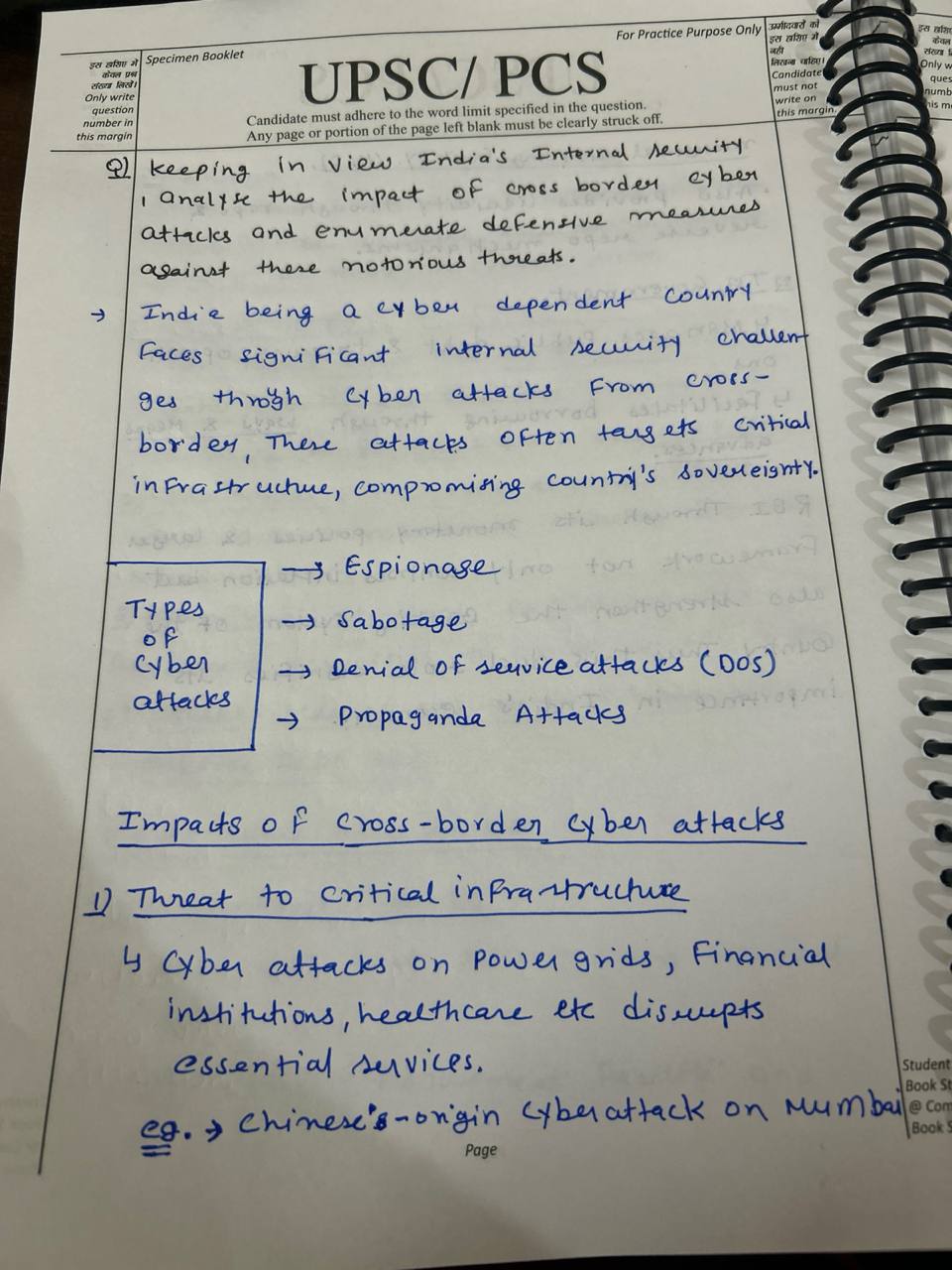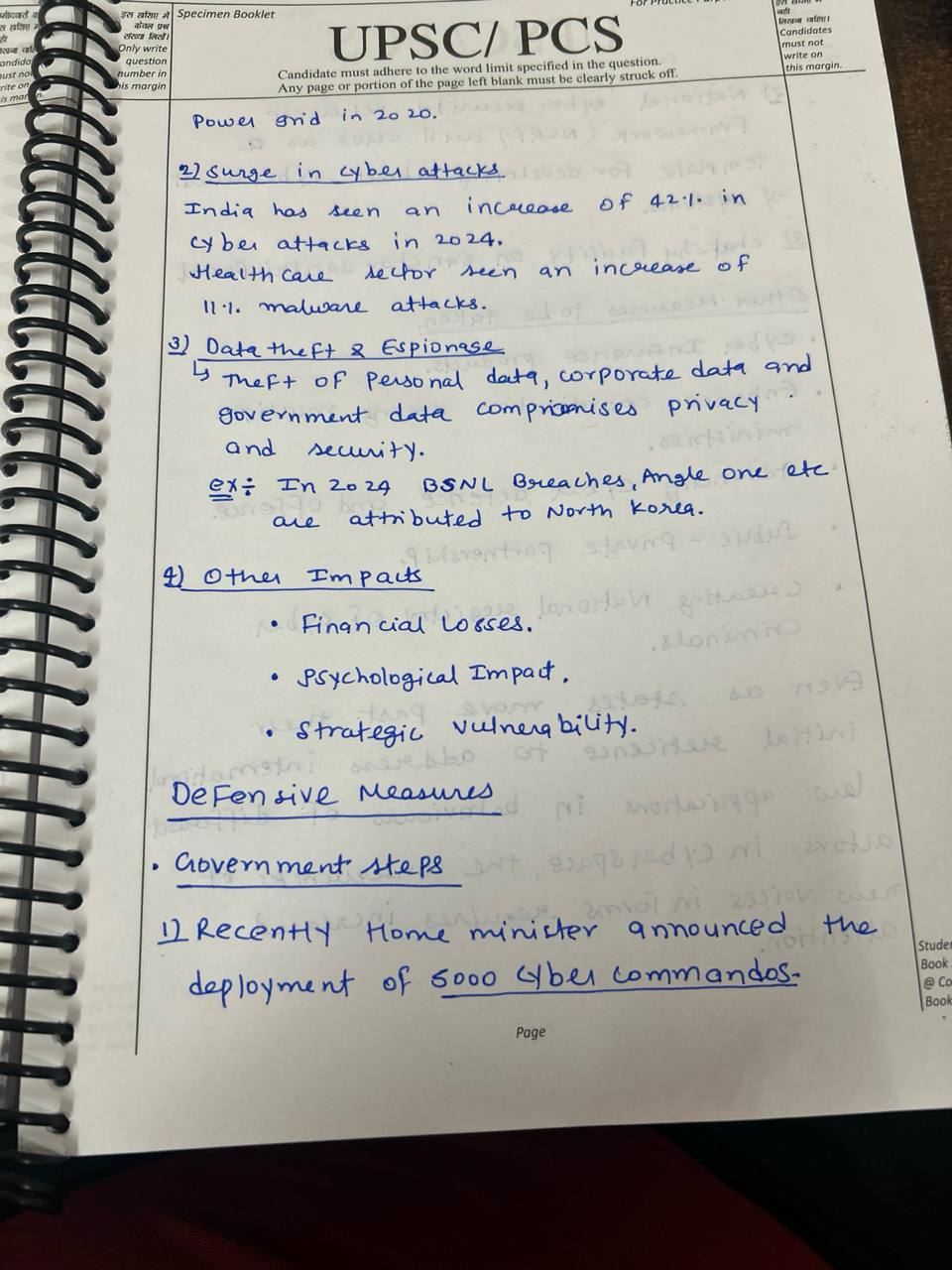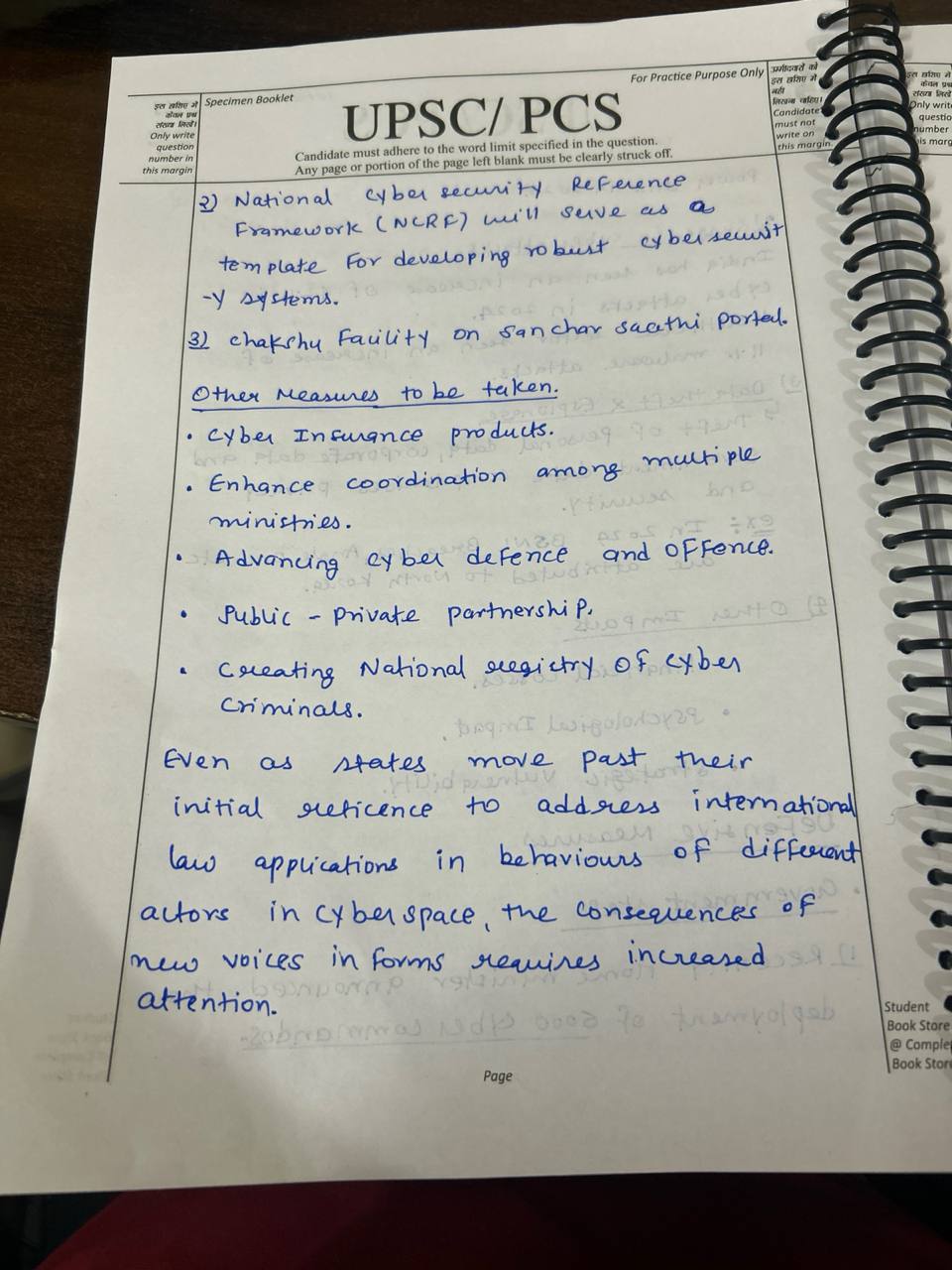Model Answer Preparedness for Unconventional Threats Hamas utilized innovative and unconventional methods, such as drones, paragliders, motorcycles, and tunnels, to bypass Israel's advanced security systems. India, facing threats in regions like Jammu and Kashmir and the Northeast, must prepare forRead more
Model Answer
Preparedness for Unconventional Threats
Hamas utilized innovative and unconventional methods, such as drones, paragliders, motorcycles, and tunnels, to bypass Israel’s advanced security systems. India, facing threats in regions like Jammu and Kashmir and the Northeast, must prepare for similar tactics. Strengthening counter-infiltration measures against tunnel networks and low-tech attacks is crucial.
Balancing Technology with Human Intelligence
Israel’s heavy reliance on advanced technological systems like surveillance and barriers was outmaneuvered by Hamas’s blend of low-tech and creative approaches. For India, integrating human intelligence and traditional reconnaissance with modern technology is essential to ensure comprehensive security coverage.
Enhanced Intelligence Integration
The attack exposed gaps in intelligence sharing and coordination in Israel. India, with multiple security agencies such as the Armed Forces, Border Security Forces, and Central Armed Police Forces under different ministries, must focus on seamless intelligence integration. Establishing a unified command structure can preempt threats effectively.
Political Stability and Security Vigilance
Israel’s internal political divisions may have distracted its focus on external threats, highlighting the importance of domestic stability. India must prioritize minimizing internal divisions to maintain a vigilant and cohesive approach to national security.
Conclusion
The Hamas attack underscores the importance of a multi-layered approach to border security, combining technology, human intelligence, and political stability. By learning from Israel’s experience, India can enhance its border management to address emerging threats effectively.
See less



The most northernmost point of India os indira Col, located in ladakh region of jammu and Kashmir. it has latitude of 35.6744° N and longitude of 78.8061° E. The most northernmost point of India mainlanf is the town of turtuk located in ladakh region
The most northernmost point of India os indira Col, located in ladakh region of jammu and Kashmir. it has latitude of 35.6744° N and longitude of 78.8061° E. The most northernmost point of India mainlanf is the town of turtuk located in ladakh region
See less